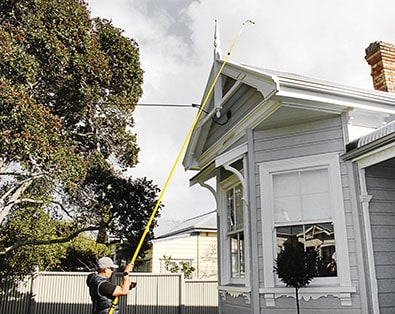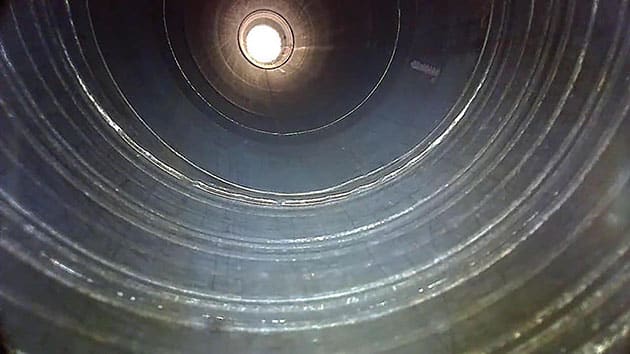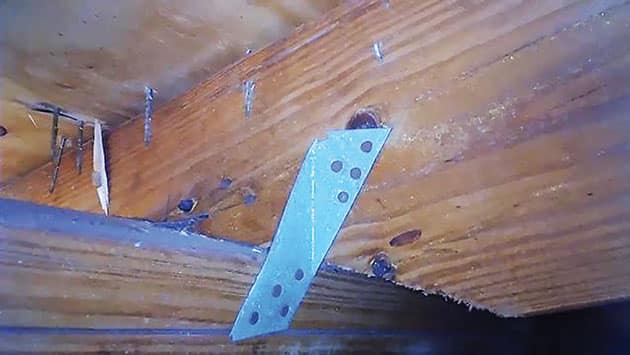New Innovation in Inspection Camera Technology
Two long-time customers reflect on how using inspection camera technology makes a difference.

Trying to access damp, cramped, poorly lit, or dangerous and hard to reach spaces can be frustrating. Fortunately, a new generation of wireless inspection cameras that offers better visibility, accessibility, and functionality can help.
To make your job easier and to support on the job safety, look for a wireless inspection camera that offers the ultimate in durability, functionality, and performance.
For the Best in Technology, Look for a Camera that:
Provides easier, faster, and safer visual inspections.
The right inspection camera can help provide a better quality of visibility to enable you to see and work in complete darkness in enclosed spaces. Check to see if the camera will give you visibility where you need it most.
Is user-friendly.
Can the camera link to your smart device? Is it compatible with Apple or Android devices? Can it be used for a variety of applications?
Is durable.
Make sure your equipment can stand up to dust and water, so it works no matter what environment you find yourself in.
Can be used anywhere.
Does it have a built-in WiFi hotspot for on-the-job ease and convenience? Is it easily rechargeable?
Is lightweight
So you can easily take it wherever you need to go.
Has a good wireless range.
Also check to see if the camera is compatible with a variety of rods. Can it be attached to a glow rod/fish stick to give you better reach? (So, it is not tethered like a traditional borescope and not limited in reach.)
Has a digital zoom function
To allow for close-up viewing.
Has an easy-to-use app
sS it can be linked to your smart device, providing an extra layer of functionality and convenience.
Can save photos and videos to your smart device
For easy documentation of faults, quotes, inspections, reporting, and proof of work.
Has the latest in technology and functionality.
Is there a choice of model or price point for you to choose from?
Has great customer reviews from fellow users and associations.
Recommendations of tools will help validate the product. What are customers saying? What are associations saying? Has it won any awards for design and innovation?
“Let’s just stick the camera in and scope it,” thought Michael Hesterberg. President of the Ohio Real Estate Inspections Association and owner of Building Inspections in Cincinnati, before reaching around a finished basement wall with his inspection camera.
“What did I see? Snake skins. A bevy of snake skins.”
Hesterberg’s clients were an excited but demanding couple, and they were in the room as the video on his phone showed exactly what homebuyers don’t want to see in their basement—scaly, scary roommates.
The clients turned right around and walked back up the stairs, but they were thankful that their home inspector caught the snakes before they did.
Inspection cameras allow you to get in tight crawl spaces and, depending on your model, even see it all from your smartphone, so you can get the job done even easier than before.
Hesterberg said he often uses his camera for chimneys. “It allows me to see the condition of the flu, and I now routinely use it for that. I have found issues multiple times, saving clients thousands of dollars using this tool.”

He also uses it to inspect stackable washers and dryers. “You can’t go behind a stackable washer and dryer, but all experienced inspectors will say that it’s a spot that when you go there, you think, ‘Oh my god. I’m glad I went there.’ “Once I went behind a washer and dryer and there were a whole series of junction boxes that were open with the wires out.”
That was absolutely against code and by finding that, Hesterberg said, it enabled the buyer to go to the builder and say, “You pull that out and you fix all that electrical.”
Another time Hesterberg went into the basement only to discover that the whole front of the house was under a crawl space; there was no access other than through a little slot in the foundation wall. “We are happy to have a product that makes our job safer and faster so we can see things we would not have been able to see,” Hesterberg said.
Kelly Gibson—who has been in business for 25 years and is owner of Bay Area Building Inspections in Clearwater, Florida—also shared his experience using the technology. His company primarily uses an inspection camera for wind mitigation inspection driven by the
insurance industry.

“We have to get up into an attic and take a picture of the roof to wall attachment at the far end of the attic, but those are extremely hard to get to,” he said. “You’re dealing with the attic insulation often, and at times you have to pull away or try to move it. Electrical wiring can also get in your way, too.”
A small enough camera allows you to get around the corner and move to where you can get a great quality picture behind whatever might be blocking you. “This has saved me a lot of time,” Gibson says. Without it, he said there’d be a lot more crawling around. It was dangerous. “You had to get out there on the edge with your knees on the bottom and just try to crawl to get photos of the roof to wall attachment.”
Ferret Tools—headquartered in Auckland, New Zealand—is an electronic design and manufacturing company creating the latest innovation in smart inspection camera technology.
Ferret Tools is a proud Affiliate Member.
Opinions or statements of authors are solely their own and do not necessarily represent the opinions or positions of ASHI, its agents, or editors. Always check with your local governmental agency and independently verify for accuracy, completeness, and reliability.
To Read the Full Article
ASHI offers its members unparalleled resources to advance their careers. ASHI offers training for inspectors at all levels of knowledge and experience, including resources about all major home systems. Members benefit from a vast network of experienced professionals, providing a community for mentorship and knowledge sharing..
In this Issue
Electrical Testers: Which Ones are Right for Your Business?
What is a Water Softener?
7 Areas of Restricted Access
The Future of Federal Housing Inspections
The Importance of Inspections
How Can Inspectors Prepare to Answer Homebuyers’ Biggest Questions?
How to Submit Articles to the Reporter
Postcards From The Field

FIND A HOME
INSPECTOR
Professional Networking
Grow your professional network, find a mentor, network with the best, and best part of the community that’s making home inspection better every day.
